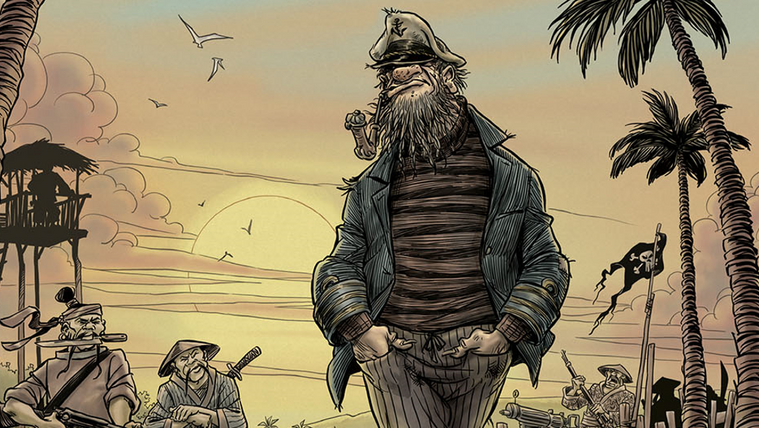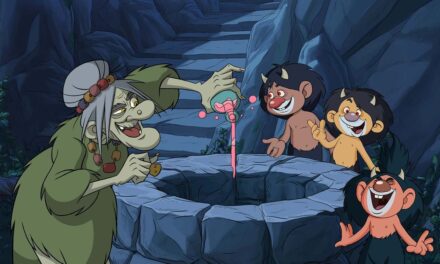Jenő Rejtő's farewell performance, The Circumnavigated Cruiser, was also renovated.
Jenő Rejtő's best-known characters also dealt a few slaps in the writer's last novel, before the country finally sank into the war. The novels banned during the Rákosi era were indestructible, and thanks to the comics of Pál Korcsmáros, they are resurrected again and again.
Now Jenő Rejtő's farewell play, The Roundabout Cruiser, has also been renovated, and the volume will debut at the Budapest International Comic Festival on May 12, 2024.
There was quite a serious flash in the eighties, when the Youth Newspaper Publishing Company began to serially publish Pál Korcsmáros's Rejtő comics, which had been published in Füles since the sixties. With his life work, Korcsmáros pretty much sealed the fate of possible later film versions, without his figures it was unthinkable to adapt any Mystery book after that.
The figures of Dirty Fred and Fülig Jimmy burned into the retinas of generations, thanks to the black and white drawings.
However, there was someone who was not impressed with comic books selling hundreds of thousands of copies. The grandson of the master, Gábor Korcsmáros, saw that the gyatra editions did not return the original quality of the ink drawings, but time also passed on Tibor Cs. Horváth's cartoon-killing scripts in addition to the printing technique. The controversial godfather of the adaptation comic subordinated everything to the text, more than once covering two-thirds of the cube with letters - only the geniuses of Korcsmáros could really break out of such a visual purgatory with their figures.
Dirty Fred returns again and again
In 2002, a good forty years after the publication of Pál Korcsmáros's first Rejtő comic, the artist's grandson and Képes Kiadó relaunched the series with a thorough repair. Thanks to the work of the draftsmen Zsolt H. Garisa and Zoltán Varga "Zerge" Zoltán, the text bubbles of the colorful frames were also transformed to remain faithful not only to the figures of Pál Korcsmáros, but also to the text of Jenő Rejtő.
Dirty Fred, the captain , which has been in its fourth edition since then, was followed by eight more hardcover comics, including two in which Jimmy Fülig and his constant nemesis, Alfréd Piszok, aka Wilbour Theodor, appeared. And now, timed for the 19th Budapest International Comic Festival on May 12, 2024, the tenth volume will be launched, again with Jenő Rejtő's most popular vagabonds in the lead role.
Completed after a five-year hiatus, the circumnavigated cruiser is a cuckoo's egg in many respects.
On the one hand, this was the first Rejtő book, which was published posthumously in the year of the author's death. According to the official version, Jenő Rejő died on January 1, 1943 as a laborer on the Eastern Front, or more precisely, he disappeared, because statistically it showed better. His last book was published a few months later, when the reconnaissance planes of the Allied Air Force were already at work identifying targets in Hungary.
The comic book fate of the circumnavigated cruiser is also out of line, starting with the fact that it was not even drawn by Pál Korcsmáros. When Tibor Cs. Horváth finished the script in 1983, the artist had already been dead for eight years. The great Csé asked a young graphic artist for the job, Éva Halasi, whose first comic was this, although he had a troubled past:
he redrawn The Lost Cruiser on A4 size. Before Gábor Korcsmáros started the renovation with the usual couple, Zsolt Garisa H. and Zoltán Varga "Zerge", he also discussed with Éva Halasi that his comic book would be brought back to life with the drawings of Pál Korcsmáros.
The circumnavigated cruiser will make its debut on Sunday at the site of the comics festival, in the Gömb Hall of the ELTE Campus - among many other goodies - where the creators of the renovated work will be there in the company of the life-size statue of Fred Piszkos and Jimmy Fülig. Entry is not free, but exit is also uncertain.
Featured image: The circumnavigated cruiser appeared after the death of Jenő Rejtő in 1943. The renovated comic book version is the 10th piece in the Képes Kiadó series. Photo: Képes Publishing, Wikipedia













